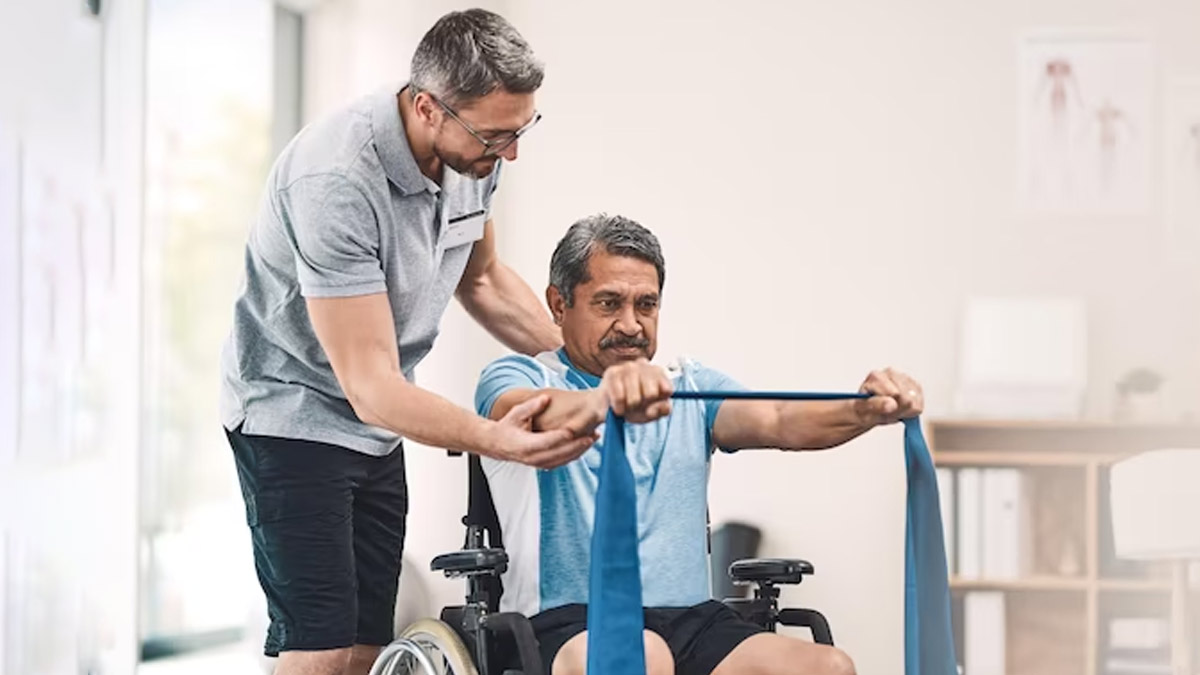
A stroke is a medical condition that occurs when the blood supply to a part of the brain is disrupted, either due to a blockage or the rupture of a blood vessel. It prevents oxygen and nutrients from reaching the brain cells, leading to their damage or death. Symptoms may include sudden weakness or numbness on one side of the body, difficulty speaking or understanding speech, loss of coordination, severe headache, and trouble with vision.
Table of Content:-
Stroke rehabilitation involves a comprehensive program of physical, occupational, and speech therapy to help individuals regain lost abilities and improve their quality of life after a stroke. Speaking with the OnlyMyHealth team, Dr Gaurish Kenkre, General Manager and Center Head, Atharv Ability, discusses the strategies involved in restoring function, improving mobility, and promoting independence in stroke patients.
Also Read: Viral Versus Bacterial Infection: Why You Need To Know The Difference
Recovery From Stroke Varies From Person To Person

According to the World Stroke Organization (WSO), there are over 1.2 crore new strokes each year, with one in four people over age 25 likely to have a stroke in their lifetime. The World Health Organization (WHO) suggests that lifelong sequelae and disabilities, including mental health problems, are common among stroke survivors, moreover because it can be a source of financial hardship. For those who survive, rehabilitation becomes crucial.
“Recovery from stroke is a journey which can be variable from person to person and can be dependent on factors including the severity of the stroke, the affected area, and how early medical intervention and rehabilitation facilities are made available,” said Dr Kenkre. According to him, it is difficult to comment on the duration an individual may take to recover from stroke, however, when it comes to rehabilitation, the primary focus is always towards the functional recovery of patients, as this enables them to be independent while performing routine tasks.
What To Expect During Stroke Rehabilitation?

Dr Kenkre said, “Rehabilitation often requires multiple sessions of different therapy approaches, such as robotics, aqua therapy, speech therapy, pain management, and neuropsychology. In most cases, stroke patients have disabilities that limit their mobility. Hence, it is beneficial for patients to seek neuro-rehabilitation at centres that offer all therapies under one roof.” “Rehabilitation after a stroke can have a positive impact on a patient's self-perception and attitude towards their condition. It can also decrease dependence on family members or caretakers, increase functional independence, and prevent pain and complications like stiffness in the shoulder, wrist pain, or instability in the ankle and knee,” he added.
Also Read: Why Health Check-Ups During Monsoon Is Necessary: Important Tests To Take
Strategies Involved In Stroke Rehabilitation

According to the doctor, rehabilitation of patients with neurological conditions caused by stroke can begin as early as day one or once the patient is medically stable. “The earlier the rehabilitation starts, the higher are the patient’s chances of recovery,” he added.
Explaining further, Dr Kenkre said, “Beginning in the early stages, the patient is taught basic mobility skills such as rolling in bed, learning to sit up, stand and walk. It can extend until the patient is independent and confident to return to his work and community life.”
Strategies involved in rehabilitating patients with neuro-disabilities caused by a stroke can be broadly categorised as restorative or rehabilitative strategies and compensatory strategies.
“In restorative strategies, patients learn to regain the function of the affected arm and leg. It helps to prevent problems such as the non-use of the weaker side and accelerates the patient’s return to mobility. Compensatory strategies, on the other hand, make use of the non-affected side of the patient to enable him or her to independently perform basic functional activities such as grooming, eating, transfers in bed,” the doctor explained.
Conclusion
Rehabilitation after an incidence of stroke is crucial for several reasons. Firstly, it helps individuals regain lost functions. Secondly, it plays a vital role in preventing secondary complications, such as muscle weakness and contractures. In addition, it promotes independence and reduces dependence on others, empowering stroke survivors to participate in daily activities to the best of their abilities.
Also watch this video
How we keep this article up to date:
We work with experts and keep a close eye on the latest in health and wellness. Whenever there is a new research or helpful information, we update our articles with accurate and useful advice.
Current Version